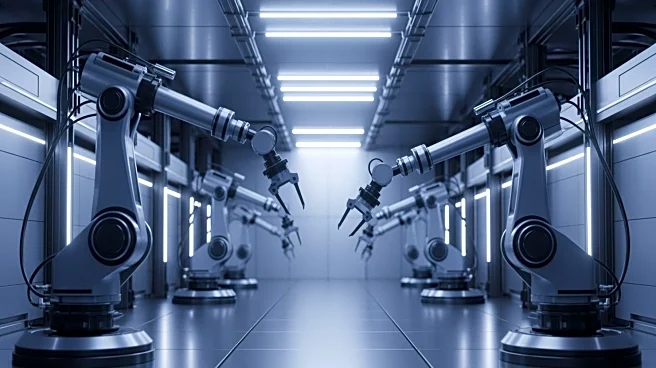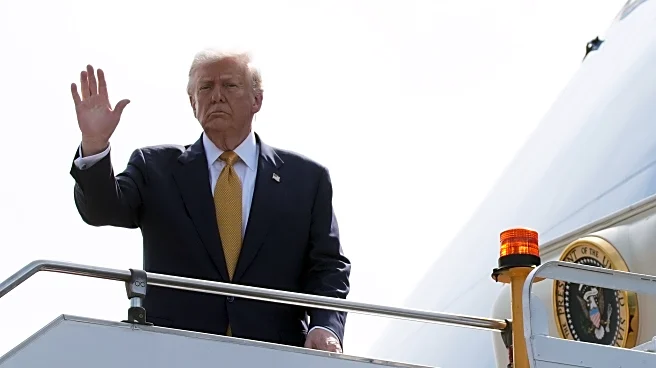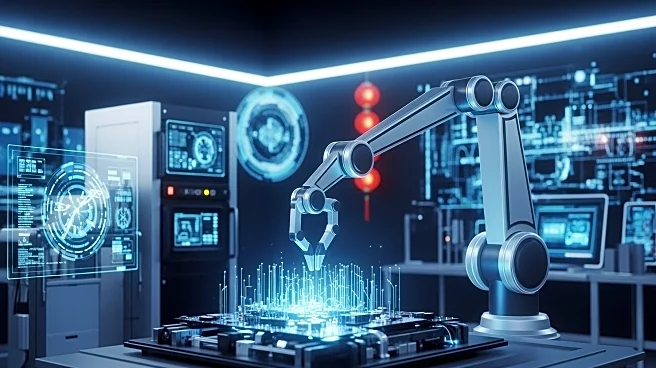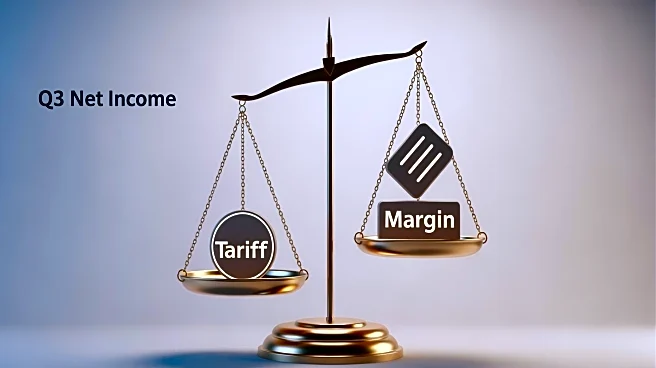What's Happening?
Beijing has reported a significant increase in industrial profits, with a 21.6% rise in September compared to the previous year. This marks the largest jump in nearly two years, according to the National
Bureau of Statistics. The surge is attributed to Beijing's policies aimed at reducing fierce price competition among industrial sectors, despite ongoing trade tensions with the U.S. The rebound began in August, with a 20.4% year-on-year increase. For the first nine months of the year, profits at major industrial firms grew by 3.2%. The manufacturing sector saw a 9.9% increase in profits, while the mining sector experienced a 29.3% decline. High-tech manufacturing contributed significantly to the profit growth, with a 26.8% increase in September.
Why It's Important?
The rise in industrial profits is crucial for China's economic stability, especially amid persistent trade tensions with the U.S. It reflects the effectiveness of Beijing's strategies to curb price wars and support manufacturers. The growth in high-tech manufacturing indicates a shift towards more advanced industrial capabilities, which could enhance China's competitive edge globally. However, the decline in mining profits and the contraction in fixed-asset investment highlight underlying challenges in the economy. The resilience in industrial output suggests that Beijing may not need to implement additional stimulus measures to meet its growth target of around 5% for the year.
What's Next?
Analysts predict a slowdown in China's export growth in the final quarter due to a high base from last year and increasing global trade barriers. Despite pledges to boost domestic demand, policymakers are focusing on technological advancements and industrial upgrades. This approach may limit large-scale consumption stimulus over the next five years, as indicated by economic planning discussions. The ongoing trade tensions with the U.S. and domestic economic challenges, such as a prolonged housing downturn and weak labor market conditions, will continue to influence China's economic strategies.
Beyond the Headlines
The emphasis on high-tech manufacturing and industrial upgrades reflects China's long-term strategy to enhance its global economic position. This focus on technological breakthroughs could lead to significant shifts in global trade dynamics, especially in sectors where China aims to establish leadership. The decline in mining profits and fixed-asset investment suggests potential vulnerabilities in traditional sectors, which may require strategic adjustments to maintain overall economic growth.














